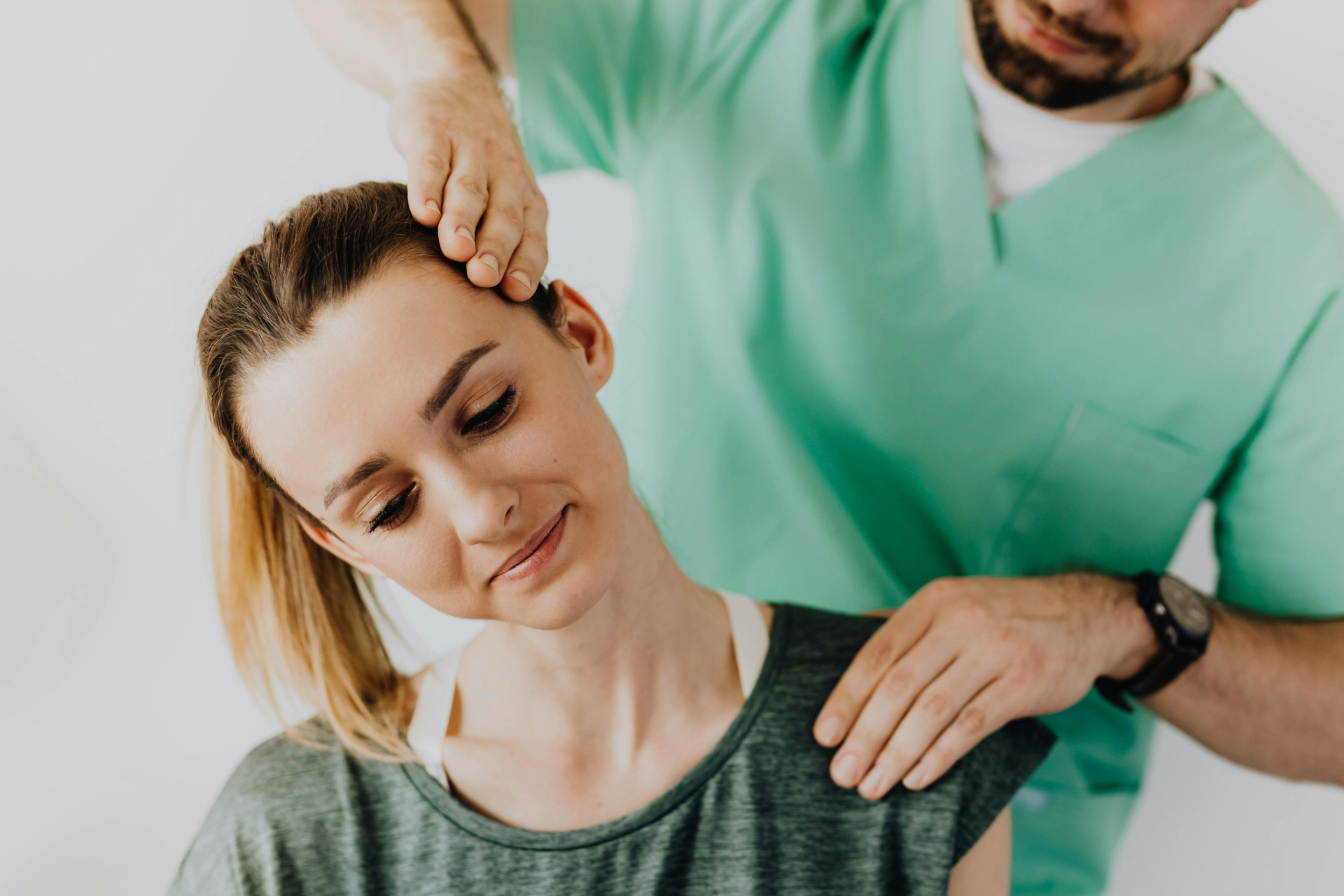
Is Nerve Flossing Good For You? We Ask The Experts
By
1 year ago
Feeling tense? This gentle movement technique could be the thing for you
If the term ‘nerve flossing’ sounds familiar, it’s likely because you have seen glimpses of it on TikTok (where videos tagged under #nerveflossingexercise have amassed more than 54 million views). But what actually is it? We asked the experts what their take on the technique is, and whether it’s safe to try at home.
What Is Nerve Flossing?
‘Nerve flossing, also known as nerve gliding or neural gliding, is a technique that involves gently mobilising and stretching a nerve to improve its mobility and reduce irritation,’ explains Aimee Victoria Long, PT and co-founder of OMNI Wellness. ‘It is often used to address nerve-related pain and dysfunction.’
‘It’s a technique rooted in neurodynamic principles, which is the understanding of how nerves behave and interact in the body’s nervous system,’ adds Ada Ooi, a TCM practitioner and founder of 001 Skincare. ‘The biomechanics, physiology and neurobiology of nerve tissues, including how they move, stretch, and respond to various stimuli are all carefully considered in nerve flossing. The technique involves specific gentle movements and stretches by applying tension to one end of a nerve while easing tension at the opposite end. By performing this back-and-forth sliding movement along the nerve’s pathway, the technique seeks to break down any adhesions that may have formed.’
What Are The Benefits?
The key benefit of regular nerve flossing is that it can help ease pain and inflammation within the body. ‘By improving nerve mobility and reducing neural tension, pain can be improved,’ emphasises Ada. ‘Regular nerve flossing can enhance nerve conduction velocity and promote nerve regeneration. The gentle movements and stretches help to increase nerve mobility and reduce neural tension, which often happens when nerves become compressed or irritated due to poor posture, repetitive movements, or injuries. It also promotes better blood circulation to the nerves, providing them with essential nutrients and oxygen necessary for healing and regeneration.
‘It can be especially beneficial for those suffering from nerve-related issues like sciatica or carpal tunnel syndrome,’ she continues. ‘This recent study from 2023 found that nerve flossing can help reduce lower back and radicular pain (pain that radiates from the lower back down into the legs) which is one of the most common types of lower back pain and is often caused by compression or irritation of the lumbosacral nerve roots.’
@doctor.tadd People have been loving these nerve flosses and getting amazing results with them so here is another video combing all of the neck ones. #arizonaphoenix #arizonachandler #pinchednerves #cervicalradiculopathy #neckpainsolutions #neckpainstretch @doctor.tadd ♬ Memories – Lux-Inspira
What Impact Does Nerve Flossing Have On Sciatica?
As mentioned, nerve flossing is thought to have a positive impact on conditions like sciatica, effectively working as pain relief. ‘While nerve flossing can be beneficial for various conditions, it is commonly associated with sciatica,’ says Aimee. ‘Sciatica is a condition defined by pain radiating along the sciatic nerve, which runs from the lower back down the back of each leg. Nerve flossing can help relieve sciatica symptoms by reducing compression and irritation of the sciatic nerve.’
‘Studies like this one have demonstrated that nerve flossing techniques can effectively reduce pain and improve functional outcomes in individuals with sciatica,’ adds Ada. ‘By targeting the sciatic nerve and surrounding tissues, nerve flossing helps alleviate compression which helps to restore optimal nerve function in those with sciatica.’
What About The Mental Health Benefits?
We’re all familiar with the idea that exercise can give us a bit of a mood boost, with regular action contributing to better mental health and emotional wellbeing – but does the same apply to nerve flossing? ‘Nerve flossing primarily focuses on physical improvement,’ says Aimee. ‘However, it may indirectly have a positive impact on mental health by reducing pain and discomfort, improving mobility, and promoting overall well-being. As I’m sure many have experienced, having a bad back and restricted movement can have a negative impact on your mental health as it prevents you from participating in so many activities that may contribute to your positive well-being.’
Is Nerve Flossing Dangerous?
The short answer: no. ‘When performed correctly nerve flossing is safe and should not cause significant discomfort, but this will depend on your tolerance level,’ confirms Ada. ‘It’s always essential to go gently and avoid overstretching or aggressive movements to prevent exacerbating your symptoms.’
‘When performed correctly, nerve flossing is generally safe,’ agrees Aimee. ‘However, it is important to start with gentle movements and gradually increase intensity to avoid aggravating symptoms. If you experience severe pain or discomfort during nerve flossing, it is advisable to consult a physio or osteopath.’
Does It Hurt?
‘It might feel tingly or slightly numb but nerve flossing should never be painful,’ says Ada. ‘If in doubt, don’t overdo it. Stop and consult a professional health practitioner.’

(c) Karolina Grabowska, Pexels
Can You Do Nerve Flossing On Your Own At Home?
Our experts advise that, if you’re unsure, you seek out healthcare guidance before trying out nerve flossing on your own. ‘It is possible to perform nerve flossing exercises at home, but it is recommended to learn the technique under the guidance of a qualified individual, such as a physio or chiropractor,’ advises Aimee. ‘They can provide personalised instructions or ques and ensure correct form and technique.’
Tip For Getting Started
Not sure where to start? ‘For beginners, it is essential to start with gentle movements and gradually increase the intensity as tolerated,’ recommends Aimee. ‘Some common nerve flossing exercises include straight leg raise, the slump stretch, piriformis stretches and hamstring extensions.’
‘It depends on the issue and area you want to focus on, but a good place to start for beginners is to try nerve gliding for the median nerve,’ suggests Ada. ‘This can help with carpal tunnel syndrome and “text neck” tension as it stretches the nerve from the hand as we lessen the stretch from the neck and vice versa. It works by pulling the nerve in one direction and then pulling the nerve in the other direction:
- Stand up straight
- Push the arm to be stretched away from your body
- Press your palm into an imaginary brick wall with your fingers facing upward and hold for a few seconds
- Then, bring your palm to your ear and look away to the other side of your body, chin pointing down slightly and hold for a few seconds. As you look away you can drop the ear to the shoulder.
- Repeat 10 times
- Start slowly and gently, paying attention to how your body responds. Gradually increase intensity as tolerated.’
What To Keep In Mind Before Trying Nerve Flossing
Nerve flossing isn’t for everyone, though: ‘If you have pre-existing conditions or complex pain you may want to consult a professional before trying at home,’ says Ada.
How Often Should You Do Nerve Flossing?
‘The frequency of nerve flossing exercises may vary depending on individual needs and the severity of symptoms and the injury,’ says Aimee. ‘It is generally recommended to start with sessions two to three times per week and gradually increase frequency as your body can tolerate it.’
Once you’ve built up your tolerance, you can look at daily sessions. ‘Once or twice a day, say morning and night, usually helps the most with increasing your mobility and relieving any tension that builds up,’ suggests Ada. ‘You may find relief by practising nerve flossing after sitting for long periods of time, say at a desk or when travelling. It can be useful to practise before activities that are strenuous on the lower back, hips or legs to prevent injury. As with any exercise, it’s important to listen to your body and not overdo it.’

(c) Andrew Neel, Unsplash
Can You Overdo It?
Like any other kind of movement or exercise, you can overdo it when it comes to nerve flossing. ‘Overdoing nerve flossing can potentially heighten symptoms or cause discomfort,’ says Aimee. ‘It is important to find a balance and avoid pushing beyond your limits. If you experience increased pain, it is advisable to see a medical professional.’
‘It’s normal to feel a slight numbness or tingling, but if the symptoms persist five to 10 minutes after the exercise, then you might have pushed too hard or done too many repetitions,’ adds Ada. ‘Next time, reduce the number of repetitions, pressure and time you’re holding each position for.’
How Soon Should You Start To Feel Results?
That depends on the individual, but in terms of relief this should come pretty quickly. ‘Usually you will feel some relief immediately but regular practice is where you will see the most benefits,’ says Ada. ‘This is especially for chronic pain and tension as it can take a while to train the body to release and learn new habits to stop the tension from building.’
‘Some individuals may experience immediate relief, while others may require consistent practice over a period of weeks or months,’ highlights Aimee. ‘It is important to be patient and consistent with your practice. Just like any other form of training or treatment.’
Featured image: Ivan Zakharenko, Unsplash










